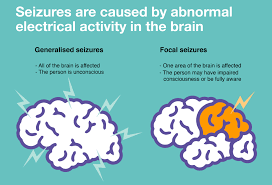Pain management can be a challenging task, especially when dealing with chronic conditions like neuropathic pain, which can persist for months or years. Gabapentin 300mg is one of the most effective medications used to treat various types of pain, particularly nerve pain, and is widely prescribed by healthcare professionals for patients suffering from a range of conditions.
Gabapentin is an anticonvulsant that also plays a crucial role in managing pain. Although its primary use was to control seizures in epilepsy patients, gabapentin has become widely used for neuropathic pain, fibromyalgia, and other chronic pain conditions.
In this guide, we’ll explore how to manage pain with gabapentin tablets, understand the mechanism of action, dosages, possible side effects, and tips for safe use.
What is Gabapentin?
Gabapentin is a medication initially approved for treating epilepsy but has since become an essential tool in managing neuropathic pain (nerve pain). Neuropathic pain is often caused by nerve damage, leading to sensations of burning, tingling, or shooting pain. Common conditions treated with gabapentin include:
- Diabetic neuropathy
- Postherpetic neuralgia (pain following shingles)
- Fibromyalgia
- Sciatica
- Multiple sclerosis (MS)-related pain
Gabapentin works by modulating electrical activity in the brain and nerves, reducing the sensation of pain. While not a traditional painkiller like opioids, gabapentin’s ability to calm overactive nerves makes it highly effective in managing chronic pain.
How Does Gabapentin Manage Pain?
The exact mechanism by which gabapentin manages pain is not fully understood, but research has shown that it alters the way nerves send pain signals to the brain.
Gabapentin works on calcium channels in the nervous system. It binds to a specific protein called the alpha-2-delta subunit of voltage-gated calcium channels. By doing so, it reduces the release of excitatory neurotransmitters like glutamate, which play a key role in transmitting pain signals. The reduction in neurotransmitter release effectively dampens overactive nerve responses, thus helping to alleviate pain.
Unlike opioids, which work by binding to opioid receptors in the brain, gabapentin targets nerve signals, which makes it particularly useful for treating neuropathic pain, where traditional painkillers often fall short.
Dosage and Administration of Gabapentin
When starting on gabapentin, it’s essential to follow your healthcare provider’s recommendations regarding the dosage. Gabapentin tablets come in varying strengths, commonly ranging from 100 mg to 800 mg per tablet. The dosage typically depends on the type of pain being treated, the patient’s response to the medication, and the severity of the condition.
Standard Dosage Recommendations
- Neuropathic Pain: The initial dose for managing neuropathic pain is usually low and is gradually increased. A typical starting dose might be 300 mg taken once daily, usually at bedtime. The dose is then gradually increased to 600–900 mg per day, divided into multiple doses.
- Chronic Pain and Fibromyalgia: For chronic pain conditions like fibromyalgia, gabapentin is often started at low doses and titrated upward based on the patient’s response. In some cases, the dose can go up to 1800 mg to 3600 mg daily, divided into 3 doses.
- Elderly Patients: Lower doses are typically recommended for elderly patients to reduce the risk of side effects.
Gabapentin is taken orally, with or without food. The dosing schedule is generally three times a day, with intervals of 8 hours between doses. It is essential not to stop the medication suddenly, as it could result in withdrawal symptoms or a return of pain.
Side Effects of Gabapentin
Like any medication, gabapentin can cause side effects, though they vary depending on the individual. Understanding potential side effects is crucial for safe use.
Common Side Effects:
- Drowsiness or Fatigue: Gabapentin can cause significant drowsiness, particularly when first starting the medication or when the dose is increased. Patients should avoid activities that require full alertness, such as driving, until they understand how the drug affects them.
- Dizziness: Gabapentin may cause dizziness, particularly when standing up too quickly. This is more common in elderly patients.
- Coordination Problems: Some patients may experience unsteadiness or a lack of coordination.
- Swelling: Peripheral edema (swelling in the arms or legs) can occur with gabapentin use, especially at higher doses.
Less Common Side Effects:
- Mood Changes: Some patients report experiencing mood swings, irritability, or anxiety while on gabapentin.
- Gastrointestinal Issues: Nausea, vomiting, and constipation can sometimes occur, although they are less common.
- Vision Changes: Some patients experience blurred vision or double vision, though this is rare.
If any side effects become particularly bothersome, it is essential to contact a healthcare provider. Adjusting the dose or switching to an alternative medication may be necessary.
Tips for Managing Pain with Gabapentin
Managing pain with gabapentin is not solely about taking the correct dosage. Several practical tips can enhance the effectiveness of the medication and minimize potential side effects:
- Start Low, Go Slow: When starting gabapentin, it’s best to begin with a low dose and increase it gradually. This approach helps your body adjust to the medication and reduces the risk of side effects like dizziness and drowsiness.
- Set a Schedule: Consistency is key when taking gabapentin. Make sure to take it at the same times every day to keep a steady level of medication in your body, which maximizes its effectiveness.
- Hydration: Drinking plenty of water helps manage side effects such as dry mouth and constipation, which are sometimes experienced with gabapentin.
- Monitor Your Symptoms: Keep track of how your pain levels change and note any side effects you experience. This information will be useful when discussing your treatment plan with your doctor.
- Avoid Alcohol: Combining alcohol with gabapentin can increase the risk of side effects such as dizziness and drowsiness. It’s best to limit or avoid alcohol while taking the medication.
- Do Not Stop Abruptly: If you feel your pain has improved or you are experiencing side effects, do not stop taking gabapentin suddenly. Stopping abruptly can lead to withdrawal symptoms like anxiety, nausea, sweating, and rebound pain. Always consult your doctor before making changes to your medication.
Combining Gabapentin with Other Treatments
Gabapentin is often most effective when combined with other treatments. For example, physical therapy, exercise, and mindfulness-based stress reduction can complement gabapentin by promoting relaxation and improving mobility, particularly for chronic pain patients.
In some cases, gabapentin is prescribed alongside other pain medications like acetaminophen or non-steroidal anti-inflammatory drugs (NSAIDs). Your doctor will carefully evaluate any potential drug interactions before recommending such a combination.
When to Contact Your Doctor
While gabapentin is generally safe and effective, there are times when you should contact your doctor:
- If you experience worsening depression or thoughts of suicide.
- If side effects like swelling, severe dizziness, or difficulty breathing occur.
- If your pain does not improve after several weeks of treatment or if it becomes more severe.
Gabapentin is a long-term treatment, and it may take time to see its full benefits. Regular check-ins with your healthcare provider are vital to ensure the medication is working effectively and that any side effects are managed appropriately.
Conclusion
Gabapentin tablets can provide significant relief for patients dealing with chronic pain, particularly neuropathic pain. By working directly on the nervous system, gabapentin reduces the intensity of pain signals sent to the brain, making it an invaluable part of pain management plans. However, it’s crucial to use gabapentin as prescribed, gradually adjust the dosage, and monitor any side effects to optimize pain relief and improve quality of life.
Always consult your doctor for personalized advice on managing pain with gabapentin, as individual responses to the medication may vary. With the right approach and careful management, gabapentin can be a powerful tool for those dealing with chronic pain conditions.



